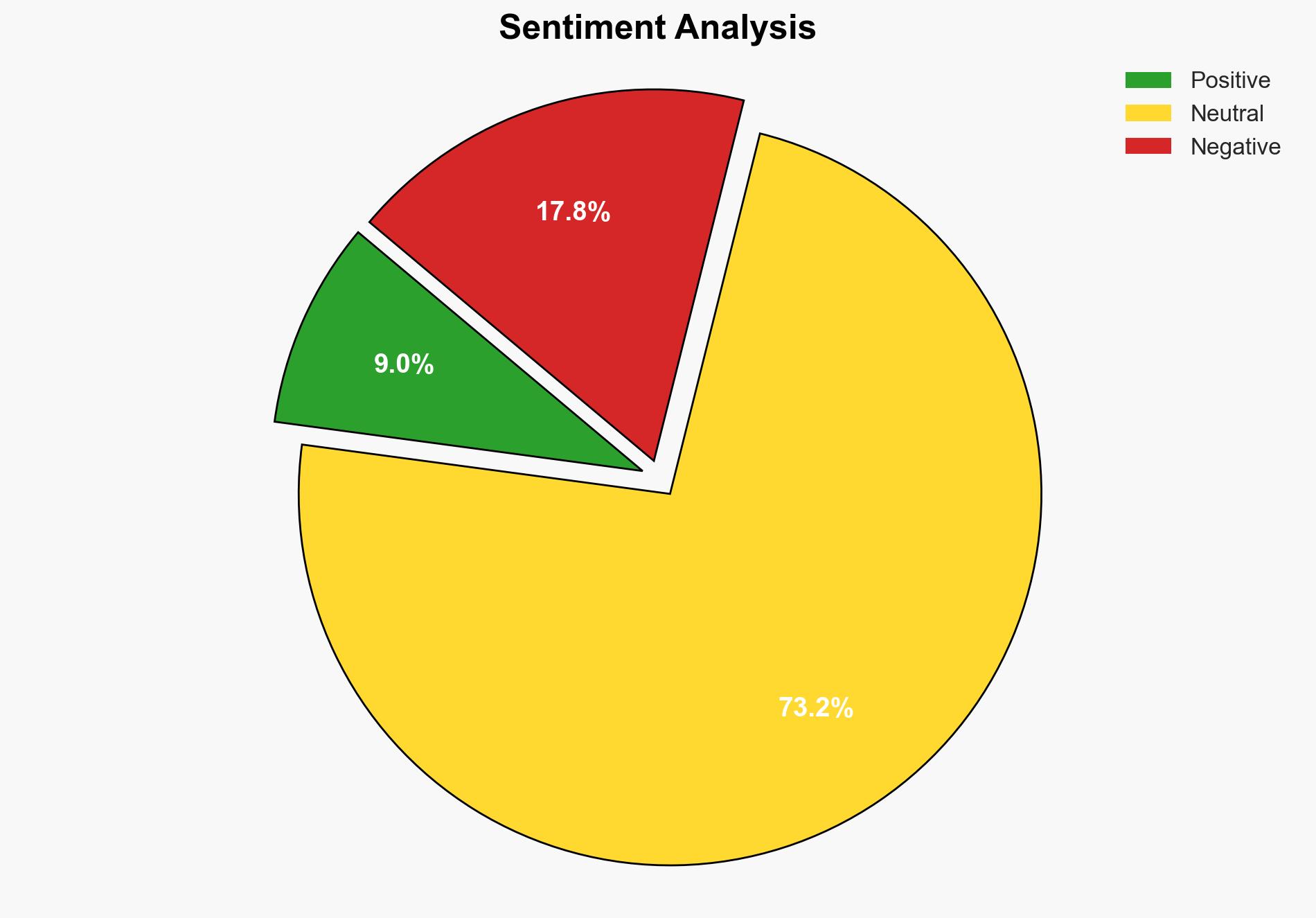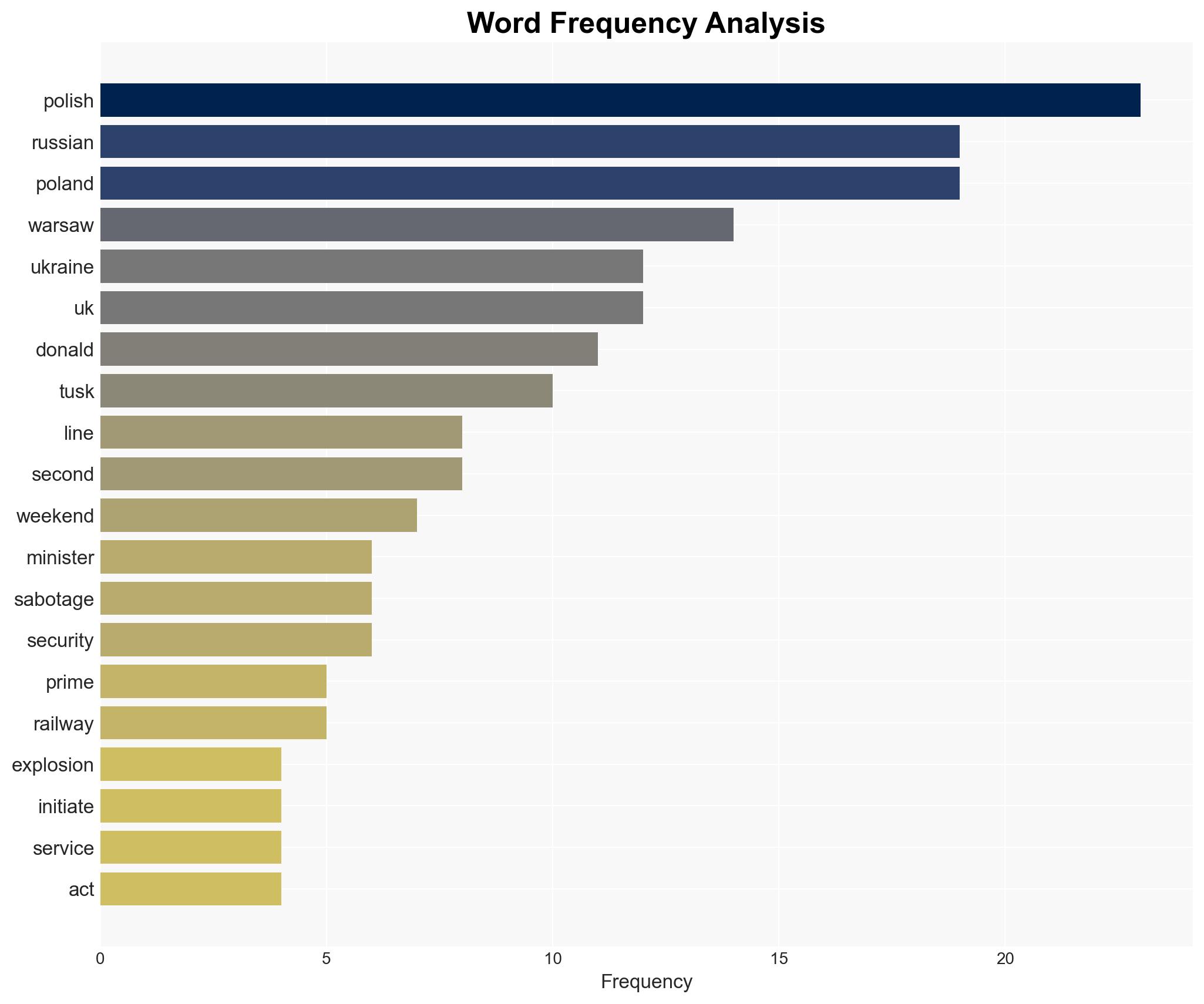Explosion on rail line ‘initiated by Russian secret services’ Polish government says – Sky.com
Published on: 2025-11-18
AI-powered OSINT brief from verified open sources. Automated NLP signal extraction with human verification. See our Methodology and Why WorldWideWatchers.
Intelligence Report:
1. BLUF (Bottom Line Up Front)
The explosion on the Polish railway line is most likely an act of sabotage orchestrated by Russian secret services, as suggested by Polish authorities. This assessment is made with moderate confidence due to the lack of direct evidence and the potential for alternative explanations. Strategic recommendations include enhancing security measures on critical infrastructure and increasing diplomatic efforts to address potential escalations.
2. Competing Hypotheses
Hypothesis 1: The explosion was orchestrated by Russian secret services to disrupt supply lines to Ukraine and demonstrate capability and intent to destabilize NATO member states.
Hypothesis 2: The explosion was a result of domestic actors or a non-state group aiming to create political instability or draw attention to grievances unrelated to Russian interests.
Hypothesis 1 is more likely due to the geopolitical context, historical patterns of Russian hybrid warfare, and the strategic significance of the rail line for Ukraine’s logistics. However, the absence of conclusive evidence necessitates consideration of Hypothesis 2.
3. Key Assumptions and Red Flags
Assumptions: The Polish government has reliable intelligence linking the explosion to Russian secret services. The rail line is a critical supply route for Ukraine.
Red Flags: Lack of direct evidence publicly disclosed. Potential bias in Polish statements due to political tensions with Russia.
Deception Indicators: Possible misinformation campaigns by Russian entities to obscure involvement.
4. Implications and Strategic Risks
The incident could escalate tensions between NATO and Russia, potentially leading to increased military readiness and economic sanctions. Cyber threats to critical infrastructure may rise as a retaliatory measure. Political destabilization in Poland could occur if public confidence in security measures wanes.
5. Recommendations and Outlook
- Enhance surveillance and security on critical infrastructure, particularly those linked to NATO operations.
- Engage in diplomatic channels to de-escalate potential conflicts and reinforce alliances.
- Best Scenario: Increased security prevents further incidents, and diplomatic efforts reduce tensions.
- Worst Scenario: Further acts of sabotage lead to military confrontations or economic disruptions.
- Most-likely Scenario: Continued low-level hybrid warfare tactics by Russia, with sporadic incidents.
6. Key Individuals and Entities
Donald Tusk – Polish Prime Minister; Jacek Dobrzyński – Spokesman for Poland’s Security Service.
7. Thematic Tags
Structured Analytic Techniques Applied
- Cognitive Bias Stress Test: Expose and correct potential biases in assessments through red-teaming and structured challenge.
- Bayesian Scenario Modeling: Use probabilistic forecasting for conflict trajectories or escalation likelihood.
- Network Influence Mapping: Map relationships between state and non-state actors for impact estimation.
Explore more:
National Security Threats Briefs ·
Daily Summary ·
Support us





